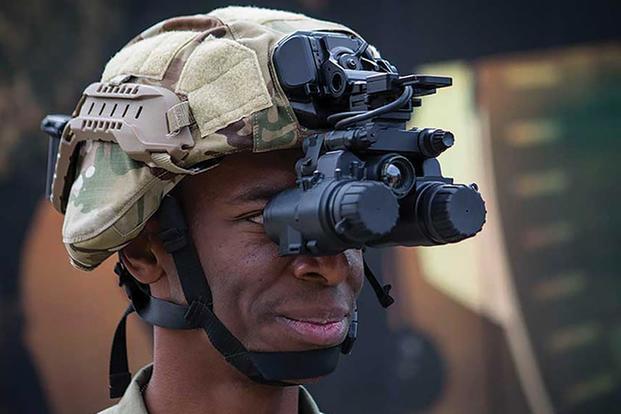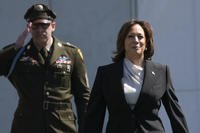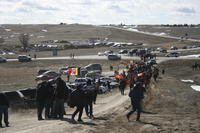A top U.S. Army Futures Command leader told Congress recently that the service will field its new, binocular-style night-vision goggles, one year after the previously announced fielding date.
"In six months, we will be putting in the hands of soldiers a night-vision goggle that is 5X," said Lt. Gen. James Richardson, deputy commander of Army Futures Command, describing the improvement of the Enhanced Night Vision Goggle-B over the night-vision gear soldiers currently carry.
The new ENVG-B -- which features a dual-tube technology that equips soldiers with infrared and thermal capability -- is scheduled to go to an armored brigade combat team in October before the unit leaves for a rotation to South Korea, Army modernization officials told members of the Senate Armed Services Committee's Airland subcommittee on Tuesday.
The Army first announced in February 2018 that it had funded the ENVG effort in the fiscal 2019 budget to give infantry and other close-combat soldiers greater depth perception than the current monocular-styled ENVGs and AN/PVS-14s.
In March 2018, Brig. Gen. Christopher Donahue, who then led the Soldier Lethality Cross-Functional Team, announced that the Army would begin fielding the ENVG-Bs in October 2018.
Richardson did not mention that the proposed ENVG-B fielding had been delayed by a year.
Military.com reached out to Army Futures Command for an explanation of the delay but did not receive a response by press time.
Richardson praised the new ENVG-B's ability to project the soldier's sight reticle in front of the firing eye, day or night -- a feature that has vastly improved marksmanship, he said.
"I have used the goggle. I have shot with the goggle, and it is better than anything I have experienced in my Army career," he said.
Subcommittee chairman Sen. Tom Cotton, R-Arkansas, said most civilians think that the Army's night-vision goggles are the "size and probably the weight of a quarter, maybe a silver dollar."
"Could you explain to us the difference of weight and shape of this next generation of night-vision goggles versus what our troops have been using?" he asked.
Richardson said the new ENVG-B is "lighter than the goggles that we have today, even though it is dual-tubed versus monocular."
Currently, most soldiers still use the AN/PVS-14. The Army began fielding the first generation of the Enhanced Night Vision Goggle in 2009. The ENVG technology consists of a traditional infrared image intensifier, similar to the PVS-14, and a thermal camera. The system fuses the IR with the thermal capability into one display.
But the new ENVG-Bs are a short-term capability that will be replaced by the Integrated Visual Augmentation System, or IVAS, made by Microsoft, Army officials have said.
IVAS is meant to replace the service's Heads-Up Display 3.0 effort to develop a high-tech digital system designed to let soldiers view their weapon sight reticle and other key tactical information through a pair of protective glasses, rather than goggles.
"You are able to train and rehearse that mission with a set of glasses," Richardson said. "The tubes have gone away; it's embedded in the glasses, which will significantly reduce the weight of where we are going.
"We believe in the next two years we will put the IVAS system on soldiers, beginning in the fourth quarter of 2022," he said.
-- Matthew Cox can be reached at matthew.cox@military.com.










